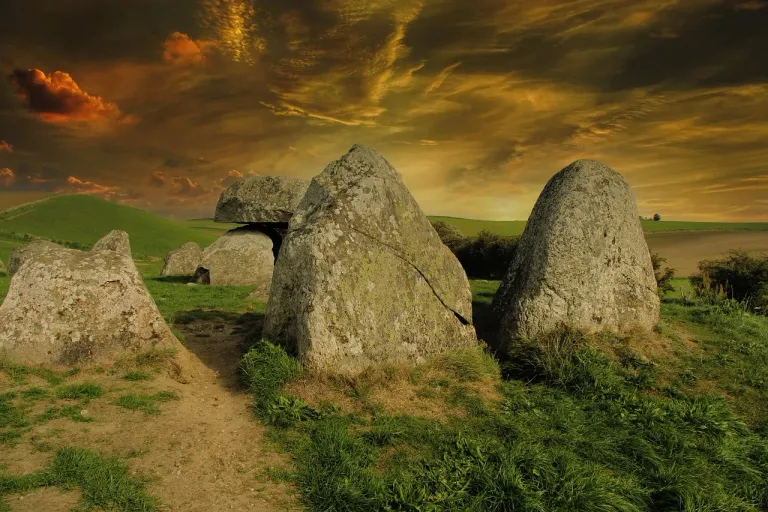Tamana Unveiled: Was There a Global Civilization Before the Great Flood?

Echoes from a Forgotten Past
In nearly every corner of the ancient world, from the fertile plains of Mesopotamia to the jungles of Mesoamerica, whispers of a time before time persist. Cultures separated by oceans speak of an age when the gods walked among men, when knowledge was pure and civilization was united under a golden rule. Then came the Deluge, the Great Flood, and the memory of that time was buried under centuries of soil, water, and myth. What if this shared memory were not a myth?
What if the world once hosted a universal civilization, one that spanned continents, spoke a similar tongue, built similar monuments, and lived under the same sky? Tamana: a forgotten name, rediscovered in fragments across the globe. A name that could hold the key to mankind’s forgotten unity.
The Name That Appears Everywhere
In the late 20th century, researchers discovered something unusual: the word Tamana appeared in over two dozen ancient and modern languages. Its meaning remained strikingly consistent, often referring to "a place," "homeland," or "center." It appeared in the oldest Sumerian tablets, in Aboriginal dialects of Australia, in Polynesian place names, and even in the indigenous languages of Central America.
Tamana, it seemed, was more than a word. It was a thread, a trace of something much older and wider-reaching than previously imagined. The late Dr. Donald A. Mackenzie and others who studied this anomaly began asking questions few dared to explore:
Was Tamana a central city? Was it a code passed down through generations? Or was it a universal name for the mother civilization of humanity? Clues Across Continents Let’s follow the traces.
In Sumer, one of the world’s oldest recorded civilizations, Tam-an-na referred to a sacred location, "the high place of the gods."
In India, Tamana appears as a name in early Vedic texts.
In Africa, particularly among the Hausa people, the word Tamana is used to describe an ancestral place of origin.
In Polynesia, islands bear the name Tamana or variations of it.
In Mesoamerica, the Maya have a near-identical term to describe a sacred or central location.
None of these civilizations is supposed to have had contact with one another. Yet their languages echo the same syllables, the same reverence. The presence of Tamana in such disconnected regions is not just a coincidence. It is a linguistic fossil, one that points to a root source.
Monuments That Mirror Each Other
The linguistic trail leads us to another layer of mystery: architecture. Across the globe, megalithic structures share striking similarities. Enormous stones, cut with surgical precision, are placed without mortar, yet have stood the test of time and seismic activity. The pyramids of Egypt, the ziggurats of Mesopotamia, the step-pyramids of Central America, and the truncated pyramids of Indonesia seem to follow a global blueprint.
Each culture claims to have built these structures under divine instruction or inherited knowledge. The stories all carry a similar pattern: the knowledge came before the catastrophe.
The Flood That Erased History
The myth of a Great Flood is not limited to the Bible or the Mesopotamian epics. It appears in over 200 ancient traditions worldwide. The Hopi, the Yoruba, the Hindus, the Celts, all speak of a time when water swallowed the Earth, destroying a former world.
Modern science confirms that sea levels rose dramatically after the last Ice Age, approximately 11,000 years ago, due to melting glaciers. Massive floods, tsunamis, and changing climates would have erased coastal settlements, where ancient civilizations often began. Could Tamana have been such a civilization? Coastal, advanced, widespread, and drowned by rising seas?
It would explain why we find similar structures, names, and myths across the globe. Tamana may not have been a single city, but rather a network of advanced settlements sharing one culture, one origin, and perhaps even one language.
A Hidden Language?
Researchers have proposed that many ancient languages, Sumerian, Tamil, Mayan, and even Basque, may have stemmed from a forgotten root tongue. When examining ancient inscriptions from distant lands, they found similar symbols and phonetic patterns.
One theory suggests that Tamana was both a civilization and a language. A proto-language from which others branched after the catastrophe. As survivors spread and settled new lands, the original language fractured into regional dialects, retaining only fragments of their former unity.
This could explain why myths from different continents often match in surprising detail. A shared ancestral memory encoded in language, ritual, and architecture.
Survivors and Carriers of the Flame
Many ancient cultures speak of survivors, those chosen to preserve knowledge after the flood. The Egyptian Shu, the Sumerian Utnapishtim, the biblical Noah, the Andean Viracocha, and the Hindu Manu all play the same role: they save what remains of civilization, often by divine instruction.
They are not just flood survivors, they are carriers of civilization, tasked with planting seeds of knowledge for the new world. Could these survivors have been the last children of Tamana? If so, the languages, myths, and structures they left behind are the fingerprints of that original society, a map pointing back to humanity’s forgotten age.
The Lost Harmony
We live in a world divided by borders, languages, and belief systems. But what if, before all of this, we were once one? One civilization. One people. One Tamana.
The memory lingers in myths. The structures remain half-buried in the jungle and sand. The word itself echoes across time, as if waiting to be remembered. Tamana may have been the cradle of humanity’s first great age, a time of unity, knowledge, and harmony, lost beneath the waves.
Posted by Waivio guest: @waivio_cosmicsecrets

